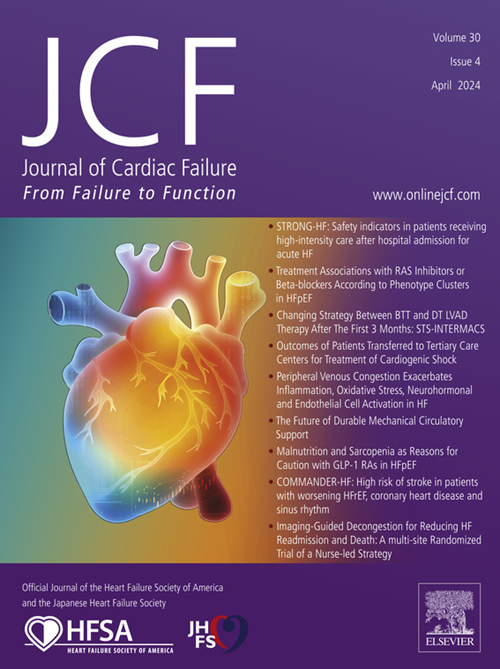Sex Differences In Clinical Outcomes Among Patients With Stress-induced Cardiomyopathy Complicated By Cardiogenic Shock: A Retrospective Multi-center Cohort Study
IF 6.7
2区 医学
Q1 CARDIAC & CARDIOVASCULAR SYSTEMS
引用次数: 0
Abstract
Introduction
Stress-Induced cardiomyopathy, which disproportionately impacts post-menopausal females, may be complicated by cardiogenic shock. However, sex-specific clinical outcomes among patients with stress-induced cardiomyopathy complicated by cardiogenic shock remains relatively understudied.
Methods
This is a retrospective cohort study using an EHR-based data platform from large academic medical centers across the United States (TriNetX, Inc.). We identified a study population of patients diagnosed with cardiogenic shock secondary to stress-induced cardiomyopathy from January 2012 through January 2024. Baseline demographics, clinical characteristics, medication use, and outcomes were defined using standardized ICD-10 codes. We stratified patients by sex, with the primary outcome of all-cause mortality at 6 months. Secondary outcomes included cardiac arrest, acute kidney injury (AKI), atrial fibrillation, and ventricular tachycardia/fibrillation (VT/VF). Propensity score matching (1:1), incorporating demographic factors, comorbidities, and medication usage, was employed to compare the risk of primary and secondary outcomes between groups.
Results
A total of 4,519 individuals were identified as having cardiogenic shock secondary to stress-induced cardiomyopathy. After propensity-score matching, there were 1,476 individuals in each group (Table). Females had a lower risk of all-cause mortality compared with their male counterparts (33.2% vs. 40.7%, HR: 0.78, 95% CI: 0.69-0.88). The females had lower risk of AKI (HR: 0.73, 95% CI: 0.66-0.80), cardiac arrest (HR: 0.86, 95% CI: 0.73-1.00), and VT/VF (HR: 0.76, 95% CI: 0.63-0.92). The risk of atrial fibrillation was similar between males and females (HR: 0.90, 95% CI: 0.76-1.06).
Conclusion
This study unveils a sex-based disparity in clinical outcomes among individuals with stress cardiomyopathy complicated by cardiogenic shock, underscoring the potential influence of sex-specific factors in the pathophysiology of this condition. Further investigations are warranted into the mechanistic underpinnings of sex-associated disparities and for tailoring therapeutic strategies to optimize clinical outcomes.
求助全文
约1分钟内获得全文
求助全文
来源期刊

Journal of Cardiac Failure
医学-心血管系统
CiteScore
7.80
自引率
8.30%
发文量
653
审稿时长
21 days
期刊介绍:
Journal of Cardiac Failure publishes original, peer-reviewed communications of scientific excellence and review articles on clinical research, basic human studies, animal studies, and bench research with potential clinical applications to heart failure - pathogenesis, etiology, epidemiology, pathophysiological mechanisms, assessment, prevention, and treatment.
 求助内容:
求助内容: 应助结果提醒方式:
应助结果提醒方式:


